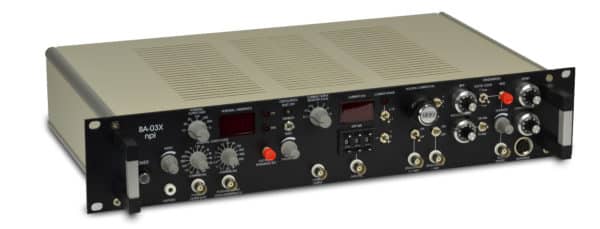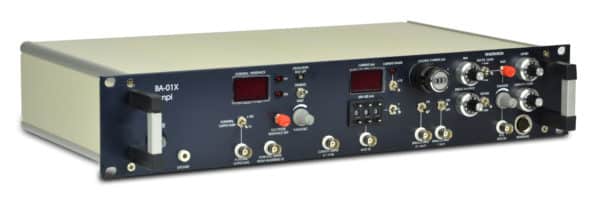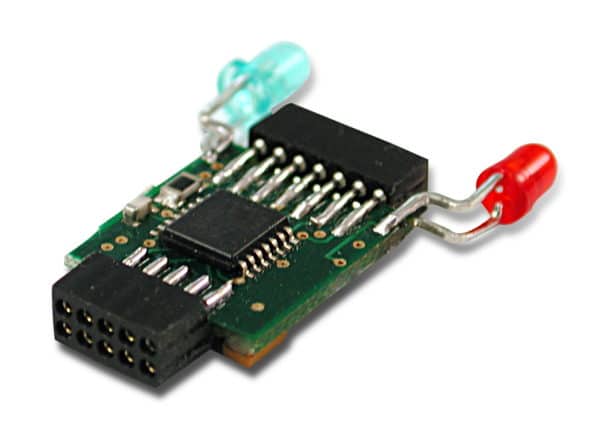The BA amplifiers are wide-bandwidth high impedance amplifier designed for intracellular current clamp recordings with sharp microelectrodes. Recording scenarios are sharp microelectrodes, perforated or tight seal patch configurations as well as electroporation and iontophoresis. npi’s BA amplifiers are used in vertebrate (rat, mouse, cat, fish etc.) and invertebrate (leech, crab, snail, insect etc.) neurons, muscle cells, other excitable tissue and plant cells. Read more…



Yes, the BA bridge amplifier series amplifiers work well with all major data acquisition hardware and software (Spike2, Signal, pClamp, Patchmaster, WinEDR, WinWCP).
Yes, the BA bridge amplifier series have a bridge compensation circuit which can compensate up to 1 GΩ.
The pipette tip is moved very close to the cell’s membrane. A current pulse will induce a voltage drop across the membrane, which causes the membrane to form small holes in the vicinity of the pipette tip. Charged molecules (DNA, dyes) can then move along the electrical field into the cell. In contrast to electroporation in a cuvette, this also works with lower voltages: the distance is also lower, resulting in a similar electric field.
Juxtacelular filling or juxtacellular labelling is a technique that allows labelling of extracellularly recording neurons. It is especially useful for structure-function correlation studies in living tissue and intact neural networks. The working principle is to iontophorese tracer molecules into the neuron under constant electrophysiological monitoring. (see doi:10.1007/978-1-60327-202-5_3)
Patch Clamp amplifiers not as precise as bridge amplifiers (pure voltage followers) since they are not as fast and might in addition draw current from the recorded cell (see doi:10.1016/S0166-2236(96)40004-2)
npi’s BA bridge amplifier series can compensate the stray capacity of the recording electrode. To do so a square pulse is applied while the electrode is immerged in the bath, Then the potentiometer for capacity compensation is adjusted, until the capacitive artefacts disappear.
The Wheatstone Bridge is used to exactly determine the pipette’s resistance. To do so, a current is applied (or current pulses) and the bridge is adjusted, until no more voltage drop is visible. Here the bridge is “balanced”. Since three resistors of the bridge are known in this state, the fourth unknown resistor (pipette) can be determined.
Yes, you can. It is easy to use in head-fixed animals. Npi also provides miniature headstages for current clamp recordings in freely moving animals.
There is a red pushbutton named BUZZ on the front panel. As soon as this is pushed, the amplifier’s capacity compensation goes to maximum, which results in rapid oscillations in the headstage’s output current. This effect, which is unwanted during regular recordings leads to a very localized mechanical stress to the cell’s membrane – small holes are generated, and the electrode tip can impale into the cell.
Pulses with high current can be applied to the electrode to get rid of the debris that clogs the electrode.
The BA series amplifiers have a high gain on the potential output (up to 1000) and also Bessel filters for lowpass and highpass filtering.
Current or voltage pulses are applied with the pipette tip close to the cell. Due to the low distance between tip and cell, lower voltages are sufficient to stimulate the cell. Neighbouring cells will not be stimulated, as the distance to those is too large.

Our dedicated team has years of industry and laboratory experience.
From complex technical challenges to tailored product recommendations,
our application scientists are ready to support your needs with hands-on expertise.